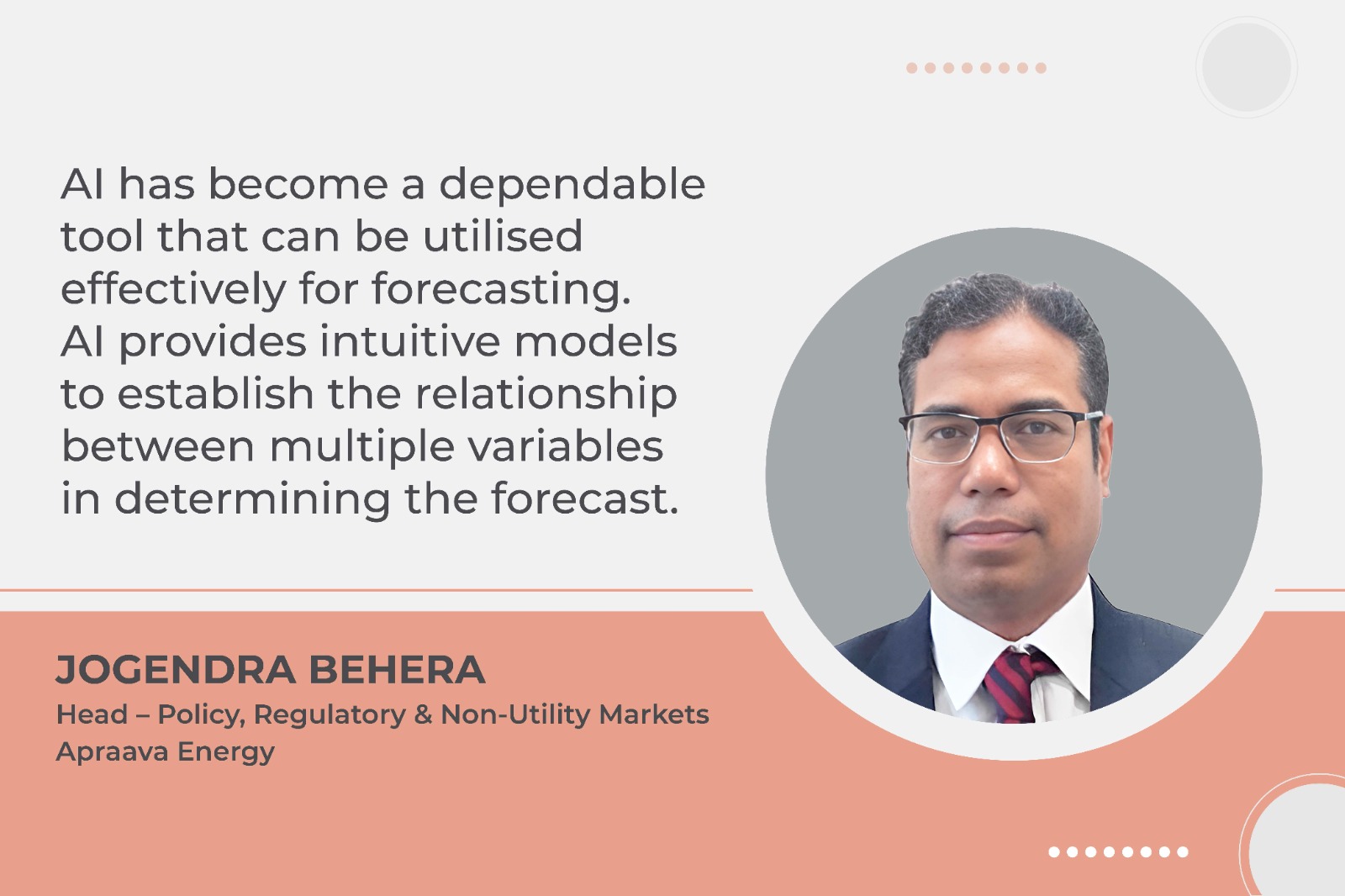AI is improving renewable energy forecasts
By Staff Report September 24, 2025 8:00 pm IST
By Staff Report September 24, 2025 8:00 pm IST

With a 40 per cent capacity and 22-23 per cent of generation coming from renewable energy (RE), integrating RE is crucial for reaching 500 gigawatts by 2030 and achieving net-zero emissions by 2070.
The renewable energy industry is the largest use case for AI. But forecasting generation and adding the demand side to integrate RE is a challenge. India’s 40 percent capacity and 22 to 23 percent of its generation come from RE. But we have to reach 500 gigawatts by 2030 and net zero by 2070; all of this would require integrating RE.
Long-term and short-term forecasting
Long-term and short-term forecasting are important, particularly from the perspective of generators. Long-term forecasting is used for planning projects, making investment commitments, and ensuring the bankability of the project. Short-term forecasting is used for revenue and minimising DSM penalties. Forecasting is also equally important for different market segments in the power exchange, where it’s not possible to revise the schedule, and we can maximise the revenue.
Forecasting from the generation side is essential for the project’s returns and viability. Before the onset of AI, we were all dependent on statistical and mathematical methods. It used to be the CAGR method to do forecasts. Then came the applications of time series models, such as ARIMA, which helped us with forecasting, input, and planning activities.
AI has become a dependable tool that can be utilised effectively for forecasting. AI provides intuitive models to establish the relationship between multiple variables in determining the forecast. Long-term forecasts are still easier in the sense that, although climate change and its associated aspects need to be addressed where uncertainty has increased, intraday and day-ahead forecasts are more challenging in the electricity sector.
Generation and demand side forecast
Generation and demand-side forecasts must be made on a 15-minute time block basis, which is a challenging task; we plan to move towards even shorter time blocks. Five-minute time block forecasting will all become even more crucial. In this context, AI provides machine learning models, deep learning models, and neural networks, such as recurrent neural networks (RNN) or long short-term memory models (LSTM), which facilitate forecasts. However, these models still require training and data, which present ongoing challenges. AI models are available, but their effectiveness depends on the data they are trained on.Machine learning model
QCS technology is currently focusing on big data and weather data, utilising data from multiple sources to develop models. We analysed data from the last three to four years using QCS’s forecast, and an error was identified due to a gate closure that prevented revision for seven to eight times the block. A machine learning model was developed by us using data from three to four years, including time of day, season, weekdays, and weekends. The model aimed to produce adjusted forecasts, improve QC forecasts, and reduce the DSM (Deviation Settlement Mechanism).
After training, the model identifies key factors across 96-time blocks in a day. Based on the time of day, season, and month, it predicts these factors and applies them to the forecasting agency’s inputs to improve scheduling, reduce errors, and minimise DSM penalties.
The scope of the project is limited, as it is not a complete overhaul of the entire forecasting engine. However, there are potential applications for large AI models, including LLMs (Large Language Models), which can aid in large decision-making processes, such as predictive maintenance, overall generation forecasting, and load forecasting based on smart meters. These capabilities could significantly enhance predictive maintenance, overall generation forecasting, and smart meter load forecasting. We can also examine some smaller use cases where AI models can add value, reduce costs, or enhance our revenue.
Therefore, AI is a great enabler today. It’s vital for grid reliability, demand forecasting, load forecasting, and planning the system. AI aids in daily decision-making, such as charging or discharging batteries, and maximises revenue through efficient use.
*****************************
We use cookies to personalize your experience. By continuing to visit this website you agree to our Terms & Conditions, Privacy Policy and Cookie Policy.